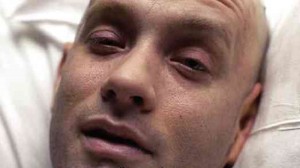Medical stories as potent come-ons
When scriptwriters think up stories for new productions, they often opt to dramatize tales about romantic or family relationships, personal or institutional conflicts, and feel-good, inspiring narratives. But, what happens if inspiration falters and the stories end up feeling like predictable, twice-told tales?
A reliable energizing input for writers is to add a “medical drama” component to their mix of storytelling attractions.
Medical stories involving illness and the search for cures are potent come-ons because everybody gets sick at one point or other in their lives, or knows someone dear who is in the grips of a physical or psychological crisis. Thus, viewers relate to those stories, and empathize strongly with their protagonists.
Conflict
This helps explain why quite a number of movies bank on conflict driven by medical problems, and doctors sometimes act as resource persons for filmmakers who want to get their storytelling exactly right.
Article continues after this advertisementAmong the most acclaimed medical film dramas is “Philadelphia,” in which Tom Hanks is unexpectedly cast as a gay man stricken with AIDS.
Article continues after this advertisementOne of the first movies about the dreaded affliction, “Living with AIDS,” was shot in 1987, and the film was praised not just for being a moving drama, but also because it showed the disease’s full scope of effects on both the patient and his caregivers, and provided “a model for compassionate community response to the AIDS epidemic.”
AIDS is also the illness of choice of other significant productions like “Alive and Kicking,” “And The Band Played On” and “Angels in America.”
For its part, “Awakenings” is about a new doctor’s distress at seeing a hospital ward full of comatose patients, and his controversial decision to use a new chemical drug on one of them.
Serious diseases
“A Lion in the House” ups the medical ante by focusing not just on one illness, but many: Five young people battle serious diseases like leukemia and lymphoma, even as their families have to contend with their own emotional struggles.
“A Walk to Remember” isn’t about illness but serious injury and its aftermath: Youths help a fellow student who is paralyzed in an accident—and love helps in the healing and therapy process.
A “popular” illness in the movies is cancer. In “A Message from Holly,” Lindsay Wagner’s character comes to terms with her impending death—but worries about the future of her little daughter.
Instructively, the most frequently tackled medical problem on the movie screen is more mental than physical.
Troubled patients
Among the many films about mental illness, one of the most acclaimed productions is Jack Nicholson’s early starrer, “One Flew Over the Cuckoo’s Nest,” in which he portrays a sane man who pretends to be mad to get out of jail—but, is sent to a mental asylum for treatment, and thus gets to interact with all sorts of mentally troubled patients!
Related movies deal with depression, like “American Beauty,” “Million Dollar Baby” and “Magnolia.”
What about Filipino movies? The local movie industry’s output is similarly replete with medical dramas, but our unique variant appears to be our penchant for “gynecological” conflicts, like the film, “Isinilang Ko ang Anak ng Ibang Babae”—!
